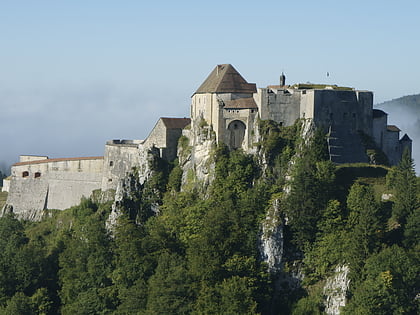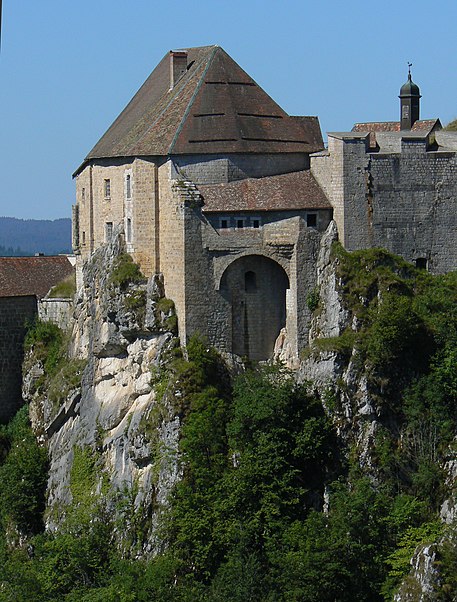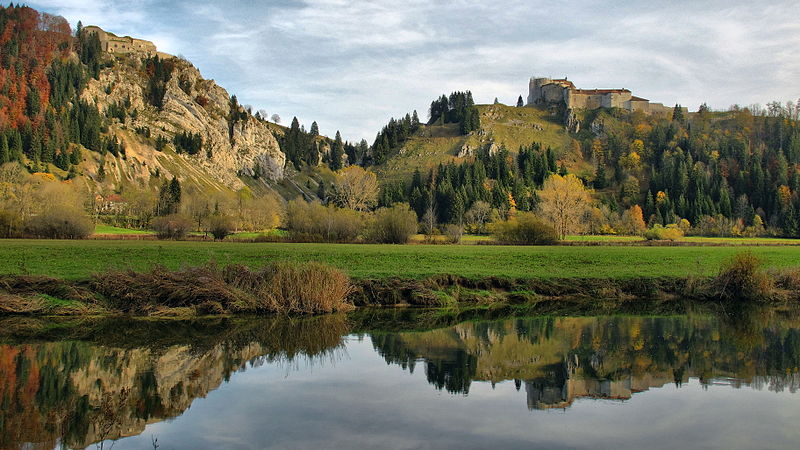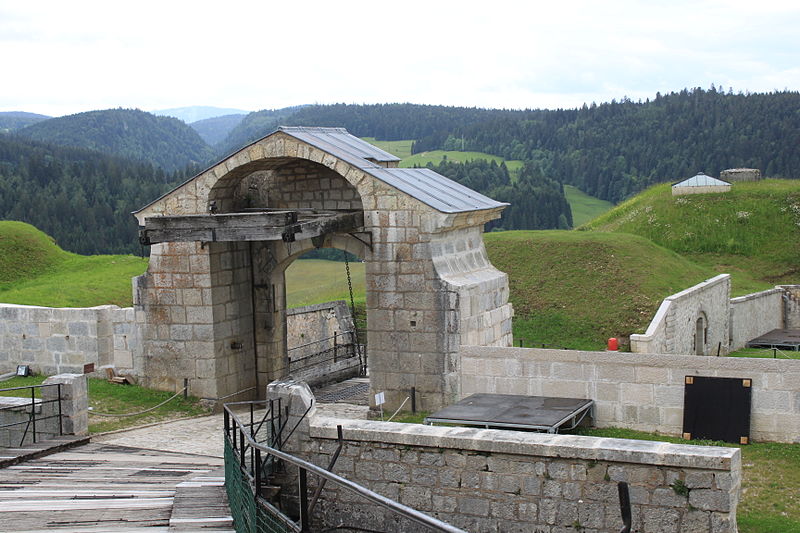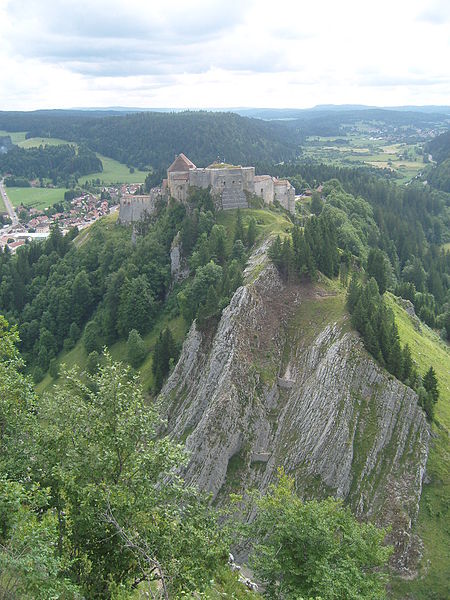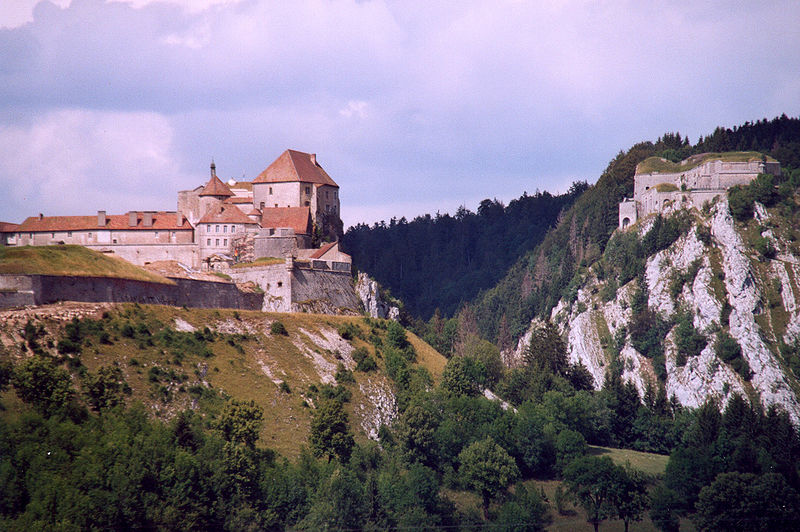Fort de Joux, La Cluse-et-Mijoux
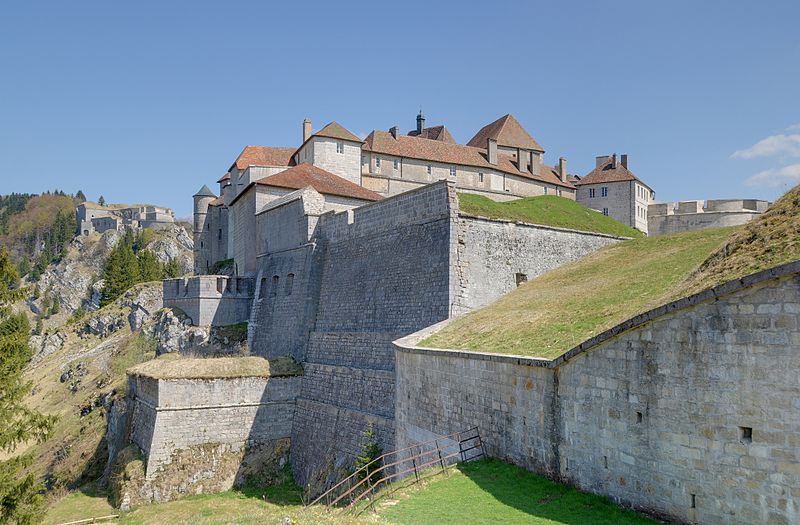
Facts and practical information
Perched high on a rocky outcrop in the city of La Cluse-et-Mijoux, the imposing Fort de Joux commands attention as a striking historical monument. This castle, with origins dating back to the 11th century, has been a sentinel over the Jura mountains and a key defensive stronghold throughout its storied past.
Fort de Joux's architecture is a testament to its evolving role through the ages, from a medieval castle to a border fortification and eventually a prison. Its strategic location on the Route des Horlogers made it an invaluable site for controlling trade and travel between France and Switzerland.
Visitors to Fort de Joux are often struck by its imposing stone structures and formidable defensive walls. The castle's history is rich with tales of war, conquest, and espionage. It has been expanded and reinforced numerous times, notably by the famous military engineer Vauban in the 17th century, reflecting the changing needs and military technologies of the times.
One of the most notable prisoners held within the fort's cold walls was Toussaint Louverture, a leader of the Haitian Revolution, whose tragic imprisonment and death in 1803 are a somber chapter in the fort's history. His cell can still be visited today, offering a poignant glimpse into the human stories woven into the fabric of this fortress.
For the average tourist, Fort de Joux offers a fascinating journey through time. The castle's museum provides historical context and showcases artifacts from various periods of its existence. Guided tours are available, allowing visitors to explore the dungeons, walk along the ramparts, and enjoy panoramic views of the surrounding landscape.
To fully appreciate the grandeur of Fort de Joux, one should wear comfortable shoes for the steep ascent and be prepared for the brisk mountain air. The fort is open to the public throughout the year, with varying hours depending on the season.
Fort de Joux – popular in the area (distance from the attraction)
Nearby attractions include: Lac de Saint-Point, Fort Mahler du Larmont inférieur, Église Saint-Bénigne, Porte Saint-Pierre.
